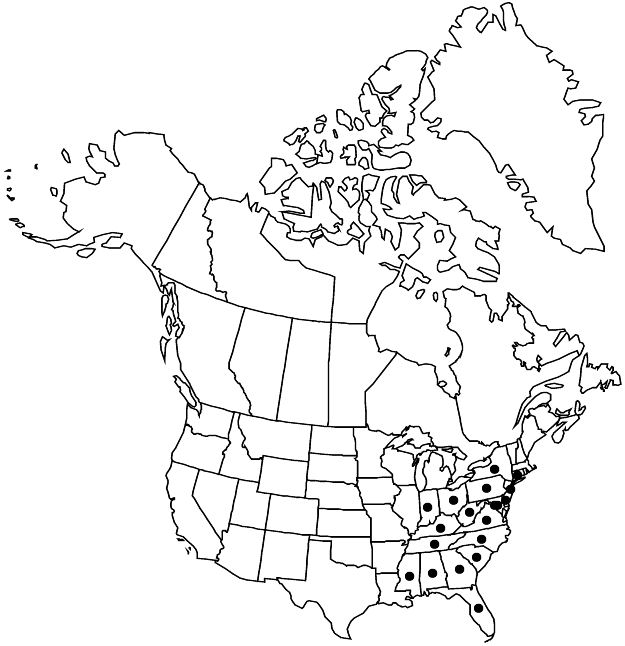Viola hirsutula
Rhodora 9: 98. 1907.
Plants perennial, acaulescent, not stoloniferous, 2–15 cm; rhizome thick, fleshy. Leaves basal, 2–4, prostrate or nearly so; stipules linear-lanceolate, margins entire, apex acute; petiole 1–10 cm, usually glabrous; blade unlobed, reniform to ovate, 1–6 × 1–5 cm, base cordate, margins serrate, ciliate or eciliate, apex rounded, adaxial leaf surface with silvery strigose patches. Peduncles 2–12 cm, glabrous. Flowers: sepals lanceolate to ovate, margins ciliate or eciliate, auricles 1–2 mm; petals light to deep reddish violet to blue-violet on both surfaces, 3 lower whitish basally, dark violet-veined, lateral 2 densely bearded, lowest 11–17 mm, spur violet, gibbous, 2–3 mm; style head beardless; cleistogamous flowers on prostrate to ascending peduncles. Capsules ellipsoid, 8–12 mm, glabrous. Seeds beige, mottled to bronze, 1–1.5 mm. 2n = 54.
Phenology: Flowering Mar–Jun.
Habitat: Dry to mesic deciduous woodlands
Elevation: 100–1000 m
Distribution

Ala., Conn., Del., D.C., Fla., Ga., Ind., Ky., Md., Miss., N.J., N.Y., N.C., Ohio, Pa., S.C., Tenn., Va., W.Va.
Discussion
Viola hirsutula exhibits little phenotypic plasticity. Although considered by N. L. Gil-Ad (1997) to be a putative hybrid, he did not identify the potential parents and chose not to recognize it. A. Cronquist in H. A. Gleason and Cronquist (1991) considered V. hirsutula a form of V. villosa. Viola hirsutula is considered one of the more distinct species throughout its range by McKinney because of the pattern of silvery strigose patches on adaxial leaf surfaces and a more prostrate growth habit than similar species. He believes V. hirsutula is one of the least variable species in the flora. Viola hirsutula appears to occur much less frequently than herbarium collections suggest. Some herbarium specimens are misidentified and represent depauperate plants, usually of V. sororia. These specimens are often hairy on the adaxial leaf surfaces but lack the silvery patches.
Viola hirsutula reportedly hybridizes with V. sororia var. sororia (= V. ×cordifolia [Nuttall] Schweinitz) and V. sagittata var. sagittata (= V. ×redacta House).
Selected References
None.